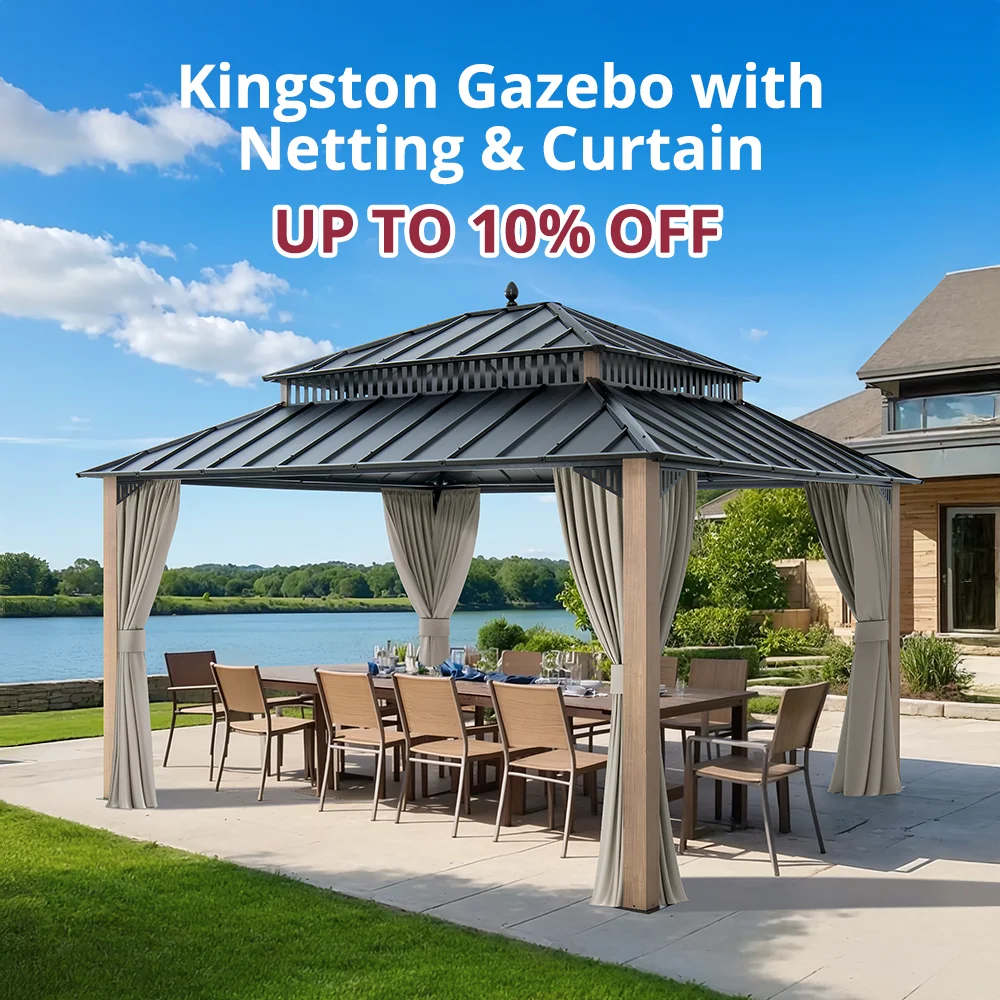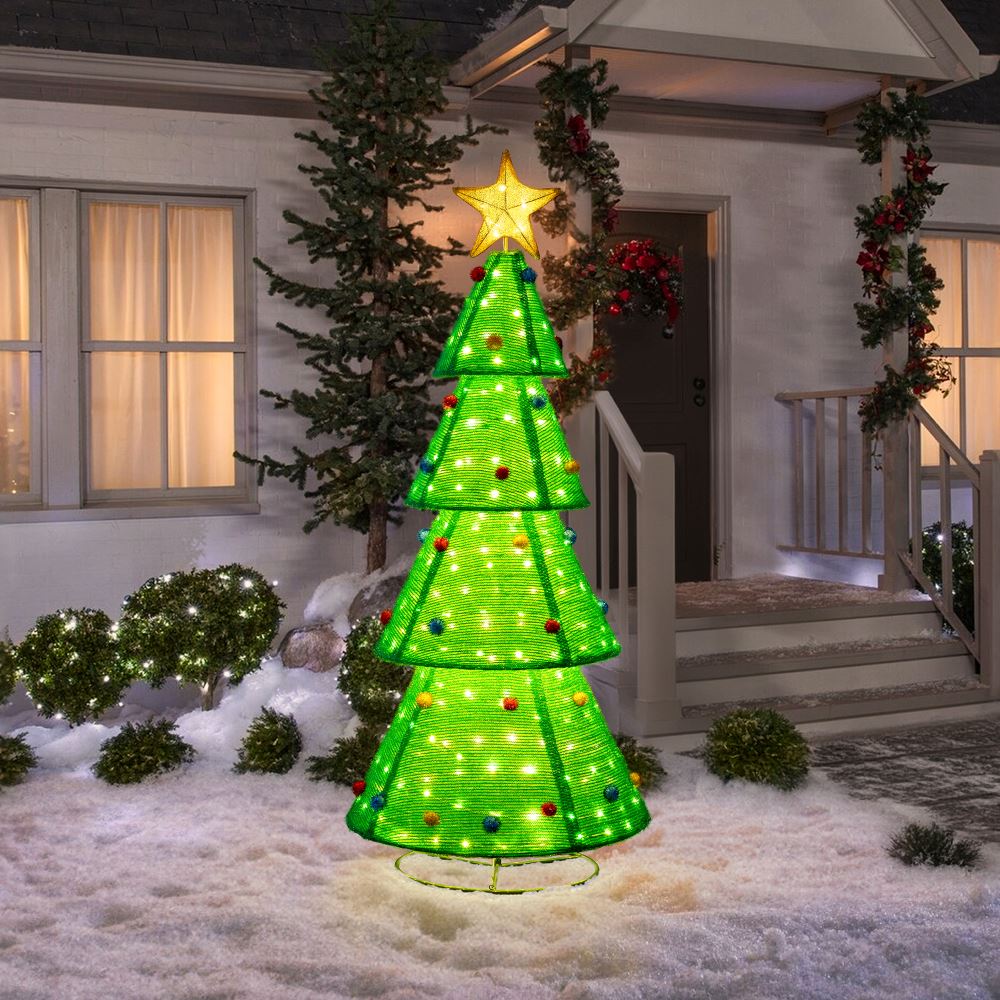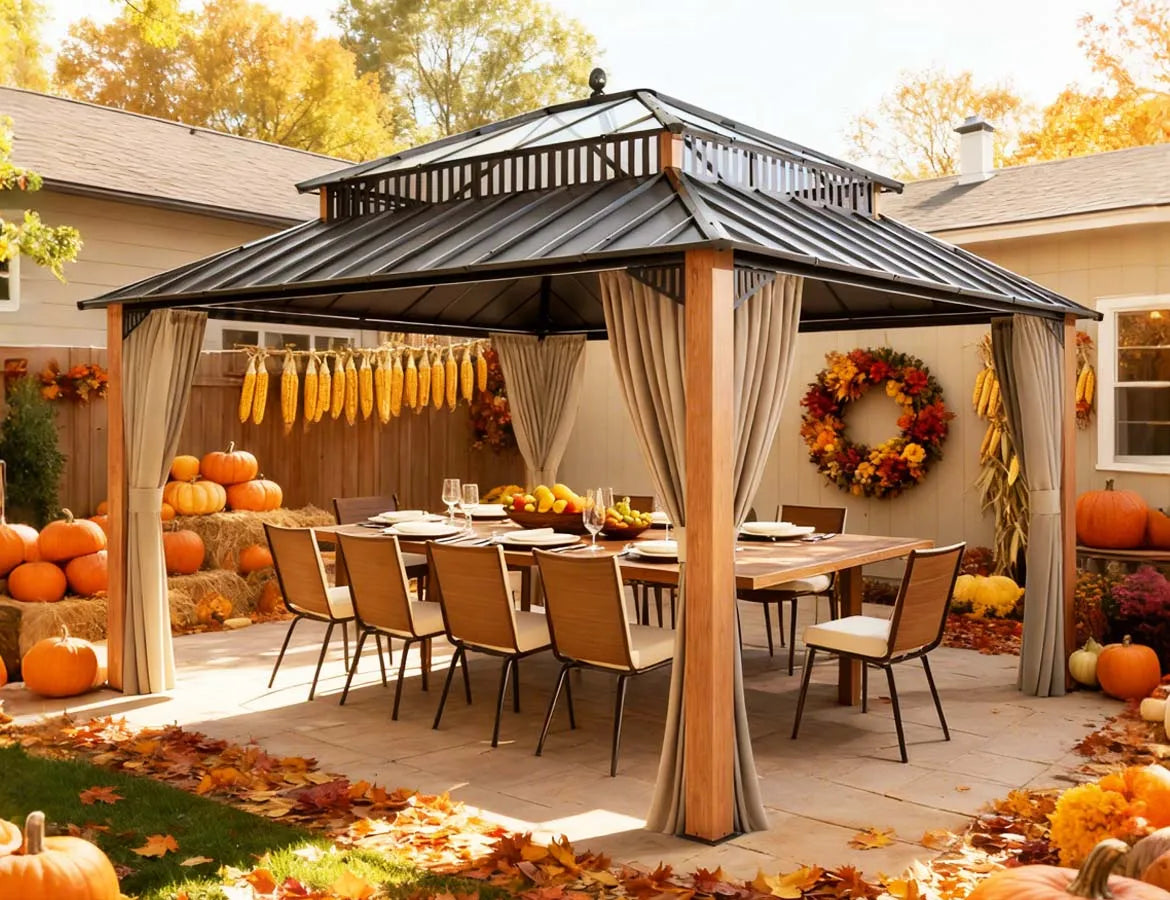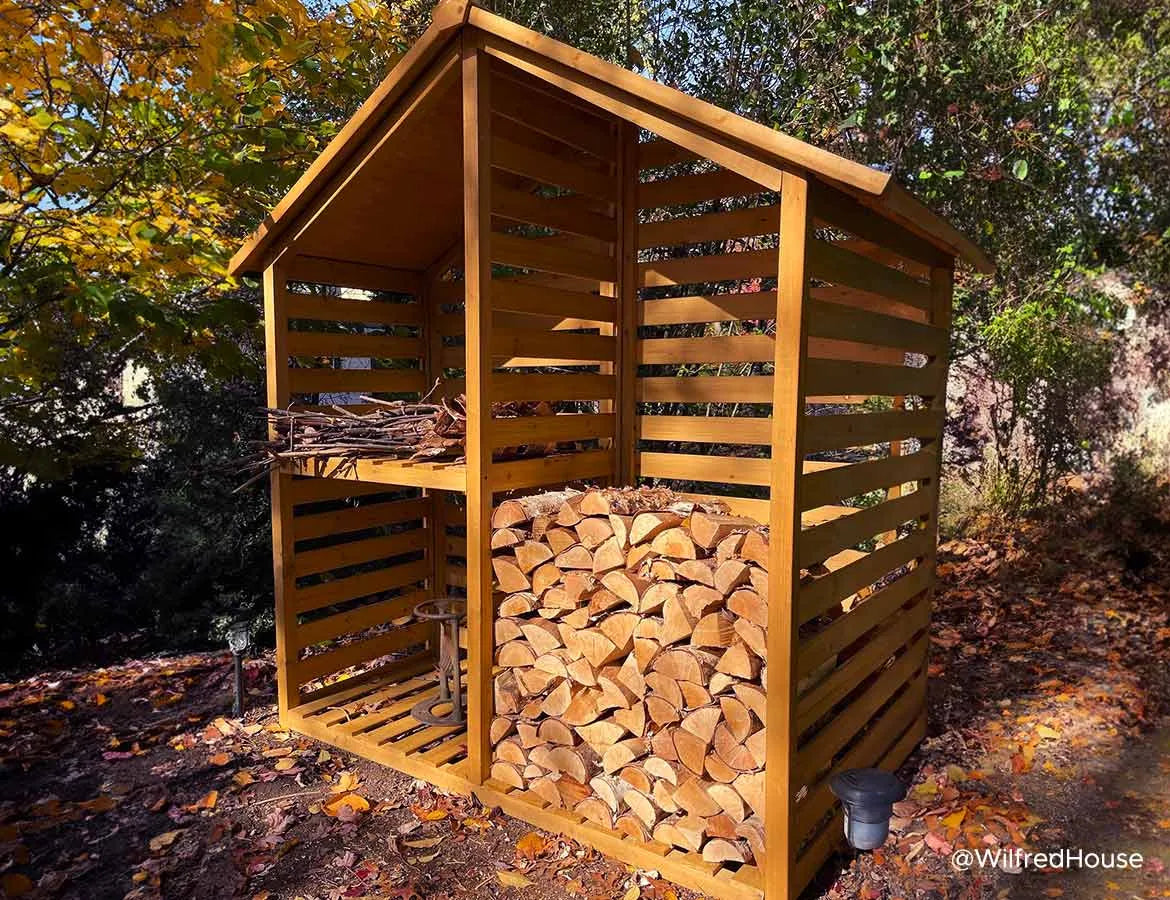There’s nothing worse than waking up after a storm to find your beautiful outdoor setup in chaos—chairs overturned, plants scattered, and your gazebo looking like it just fought a hurricane.
If you’ve invested in a gazebo, it’s more than just a structure—it’s the heart of your backyard gatherings, a place where memories are made. But even the best-looking gazebo can become vulnerable without proper reinforcement against wind.
This guide will help you understand how wind affects gazebos, what makes a gazebo wind resistant, and how to anchor and maintain your structure for year-round safety and durability.
Step 1: Understand What Makes Wind a Gazebo’s Greatest Enemy
Wind doesn’t always need to be strong to cause trouble. Even gusts of 25–35 mph can loosen poorly secured gazebos, while storms above 50 mph can lift lightweight frames or tear soft tops.
The physics behind it is simple—when wind flows under or around the gazebo, it creates pressure differences that can literally lift the entire structure off the ground like a kite.
Soft top vs hard top:
Soft top gazebos often face higher risk because their fabric can act like a sail.
Hard top gazebos, especially those made from steel or aluminum, are heavier and more stable—but still require proper anchoring.
That’s why choosing a heavy duty gazebo designed for wind and snow resistance, such as those from SUNJOY, is your first line of defense.
Step 2: Choose the Right Wind-Resistant Design
When shopping for a new gazebo or upgrading an existing one, pay close attention to design details that boost wind resistance.
Here’s what to look for:
1. Ventilated roof design – A double-tier or vented top allows air to escape rather than building up pressure beneath the canopy.
2. Reinforced steel or aluminum frame – The stronger and denser the frame, the better it withstands lateral wind force.
3. Cross-beam support and triangular braces – These structural reinforcements distribute stress evenly across the frame.
4. Anchoring compatibility – Look for models with pre-drilled anchor plates or integrated ground stakes.
5. Wind rating – Many modern gazebos include a certified wind rating (e.g., 50 MPH) so you can know what conditions it can withstand.
6. SUNJOY’s metal gazebo collections—such as the Kingston and Merriam series—combine all of these engineering details with modern aesthetics, making them both practical and stylish.
Step 3: Anchor Your Gazebo Like a Pro
Even the toughest gazebo needs a solid foundation. Without anchoring, it’s only as secure as the next gust of wind. Below are some effective gazebo anchoring ideas that work for various surfaces:
1. Anchor to Concrete or Pavers
Use concrete screws or expansion bolts through the base plates of your gazebo legs. For pavers, drilling through the joints and filling with concrete anchors can help keep the surface intact.
2. Anchor to Decking
For wooden decks, use lag bolts and metal brackets to secure each post directly to the joists below the decking boards. Avoid attaching only to surface planks—they can splinter under pressure.
3. Anchor in Soil or Grass
If your gazebo sits on grass or dirt, use ground anchors or spiral stakes. Drive them deep into the soil and attach each leg using strong steel cables or straps.
4. Use Weight Bags or Sandbags (Temporary Solution)
This method works best for pop-up or portable gazebos. Place heavy sandbags or weight plates around each post to prevent uplift during mild winds.
If you’re looking for a durable outdoor structure that doesn’t require frequent adjustments, permanent anchoring combined with a wind-rated frame is the best investment.
Step 4: Regular Maintenance to Improve Wind Resistance
A gazebo isn’t a “set and forget” structure. Routine maintenance helps it stay sturdy through changing weather.
Tighten bolts and screws every few months, especially after strong winds.
Inspect the roof panels for loosened screws or cracks that can catch the wind.
Clean and lubricate joints to prevent rust buildup that weakens structural integrity.
Check for fabric tension if you have a soft top—loose fabric flaps can amplify wind stress.
Remove curtains or mosquito nets before a storm to reduce wind drag.
By doing these small check-ups, you’re extending the life of your investment—and keeping your family safe when weather turns rough.
Step 5: Add Wind-Smart Accessories
A gazebo can be both beautiful and wind-resilient when accessorized smartly. Here are some practical yet aesthetic ideas:
Weighted planters at each corner – They act as natural stabilizers while enhancing visual appeal.
Curtains with tie-backs – Keep them secured during strong gusts to prevent flapping.
Mosquito netting on tracks – Dual-track systems (like those on many SUNJOY models) allow easy removal before a storm.
Ceiling hooks and hanging lights – Always hang lightweight décor that won’t create additional stress on the roof frame.
Accessories are not just decoration—they can also help you balance airflow and weight distribution for a more stable setup.
Step 6: Invest in the Right Materials
If your area is prone to seasonal storms, material selection matters as much as design.
Aluminum gazebos – Lightweight but corrosion-resistant and easy to maintain.
Steel gazebos – Heavier, ideal for high-wind environments, especially when powder-coated for durability.
Wood gazebos – Beautiful and naturally strong, but need regular sealing to resist rot and moisture.
SUNJOY combines these materials cleverly—for instance, cedar wood frames with galvanized steel roofs offer the perfect balance of warmth and performance.
When choosing, think about your location’s average wind speed, rainfall, and snow load. A slightly heavier structure often equals greater peace of mind.
Step 7: Know When to Take Action Before a Storm
Even the most wind resistant gazebo has its limits. Before extreme weather, take a few proactive steps:
Remove all hanging items and curtains.
Secure or store furniture under cover.
Double-check that all anchors are tight and intact.
If possible, close mosquito netting to reduce internal turbulence.
After the storm, inspect your gazebo carefully. Early detection of damage—like bent beams or loose screws—prevents further weakening over time.
Step 8: The SUNJOY Standard – Designed to Withstand the Elements
With more than 20 years of outdoor innovation, SUNJOY engineers its gazebos for real-world durability, not just display. Every metal gazebo undergoes testing for wind and snow loads, with many models featuring:
Wind ratings up to 50 MPH
Snow load ratings over 3,000 lbs
Rust-resistant powder coatings
Double-roof ventilation
Dual-track systems for netting and curtains
These features aren’t just technical—they translate to fewer worries and more time enjoying your outdoor space, whether you’re hosting a summer BBQ or relaxing on a quiet winter morning.
By investing in a heavy duty gazebo from SUNJOY, you’re not just buying shelter—you’re buying stability and peace of mind.
✨ Final Thoughts
Wind is powerful, but preparation is stronger. With the right structure, materials, and anchoring strategy, your gazebo doesn’t have to fear the storm.
A well-secured gazebo transforms your outdoor area into a reliable, weather-ready haven—the perfect balance of beauty and endurance.
So next time you feel that breeze picking up, smile knowing your durable outdoor structure is ready for whatever nature throws its way.
Because with SUNJOY, comfort and confidence always go hand in hand.






Leave a comment
All comments are moderated before being published.
This site is protected by hCaptcha and the hCaptcha Privacy Policy and Terms of Service apply.